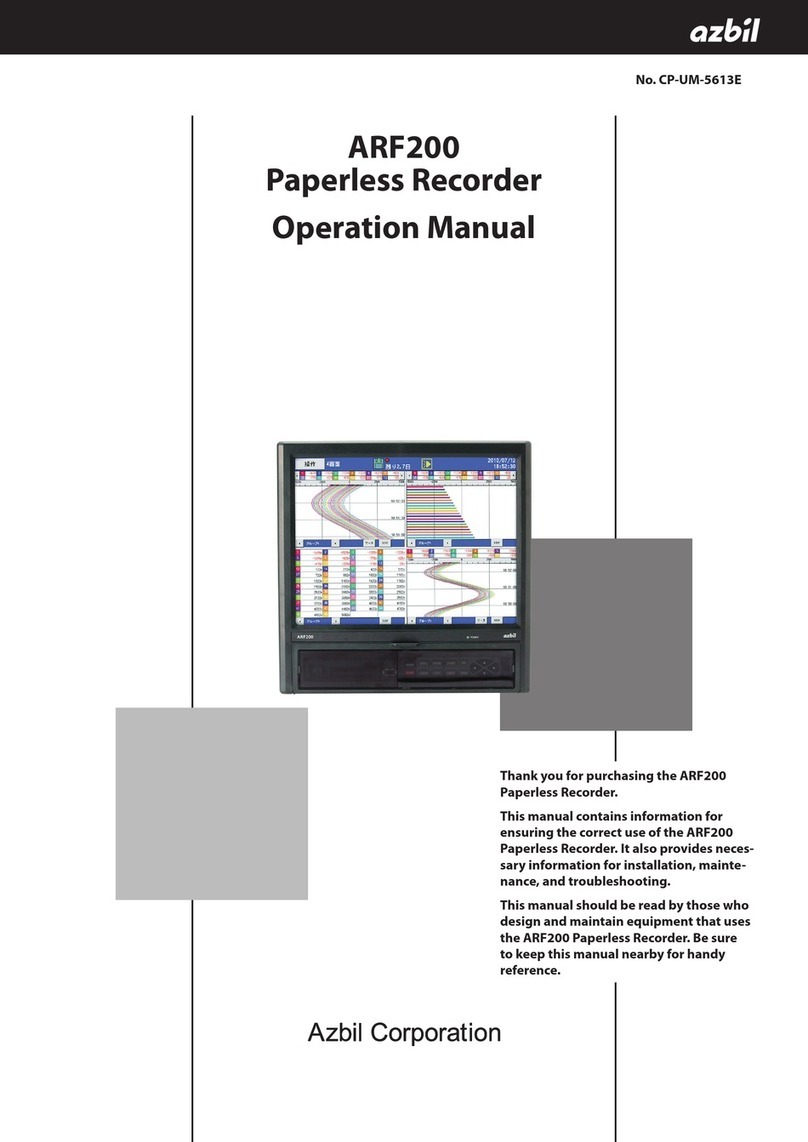
- 1 -
1. Introduction
Thank you for purchasing SR series (Pen Type) with 100mm recording width.
This industrial use instrument records input signals to the chart paper and stores data into the SD card.
Mount this instrument on the indoor instrumentation panel etc. and record signals of temperature sensor, pressure gauge,
hygrometer and flow meter. Reading signals of the recorder are thermocouple, resistance thermometer, DCmV and DCV.
Make sure to read this instruction manual in advance to understand this unit well and prevent troubles from occurring. This
manual is a “Wiring/Installation” Instruction manual.
Read the "General" Instruction manual from the CD-ROM provided when using the unit.
- To the persons doing instrumentation, installation, and sales -
Make sure to provide this instruction manual to the person who uses the unit.
- To the users of this unit -
Store this instruction manual with care until you scrap the unit.
Also, write down the parameter contents set in the product and keep it for your record.
Re
uest
This product is warranted for one year from the date of delivery. If it is damaged during the warranty period, when used
normally based on the cautions in the instruction manual labels attached to the product, etc., it will be repaired without
any charge (only in Japan). In the case, we are sorry to trouble you, but please contact your dealer or nearest our sales
office.
However, in cases of the followings, it will be repaired at your expense even during warranty period.
1. Failure or damage caused by improper use or connection, or invalid repair or modification.
2. Failure or damage caused by fire, earthquake, wind or flood, thunderbolt, or other extraordinary natural phenomena,
or pollution, salt, harmful gas, abnormal voltage, or use of unspecified power.
3. Replacement of parts or accessories that have reached the end of their life.
Furthermore, the term ‘warranty’ in this sense covers only a Azbil ’s product itself. Therefore, we are not responsible for
compensation for whatever the damage that is triggered by failure of our product.
Product warrant
eriod
1. No part of this manual can be reproduced or copied in any form without permission.
2. The contents of this manual may be altered without prior notice.
3. This manual has been documented by making assurance doubly sure. However, if any question arises or if any error,
an omission, or other deficiencies are found, please contact your nearest our sales office.
4. Azbil is not responsible for any operation results of this software.
Notice
1. Microsoft, Windows, Windows XP, Windows Vista, Windows 7, and NET Framework are trademarks of Microsoft
Corporation and the related company.
2. SD Memory Card is the trademark of Panasonic Corporation, SanDisk Corporation in USA, and TOSHIBA
CORPORATION.
3. Other described company names and product names are trademarks and registered products of the respective
companies.
4. Please note that the marks “TM” and “®” are omitted throughout this manual.
Trademark
Perchlorate Material
This instrument uses battery with Perchlorate Material.
Special handling may apply, see
http://www. dtsc.ca.gov/hazardouswaste/perchiorate
Warning




























